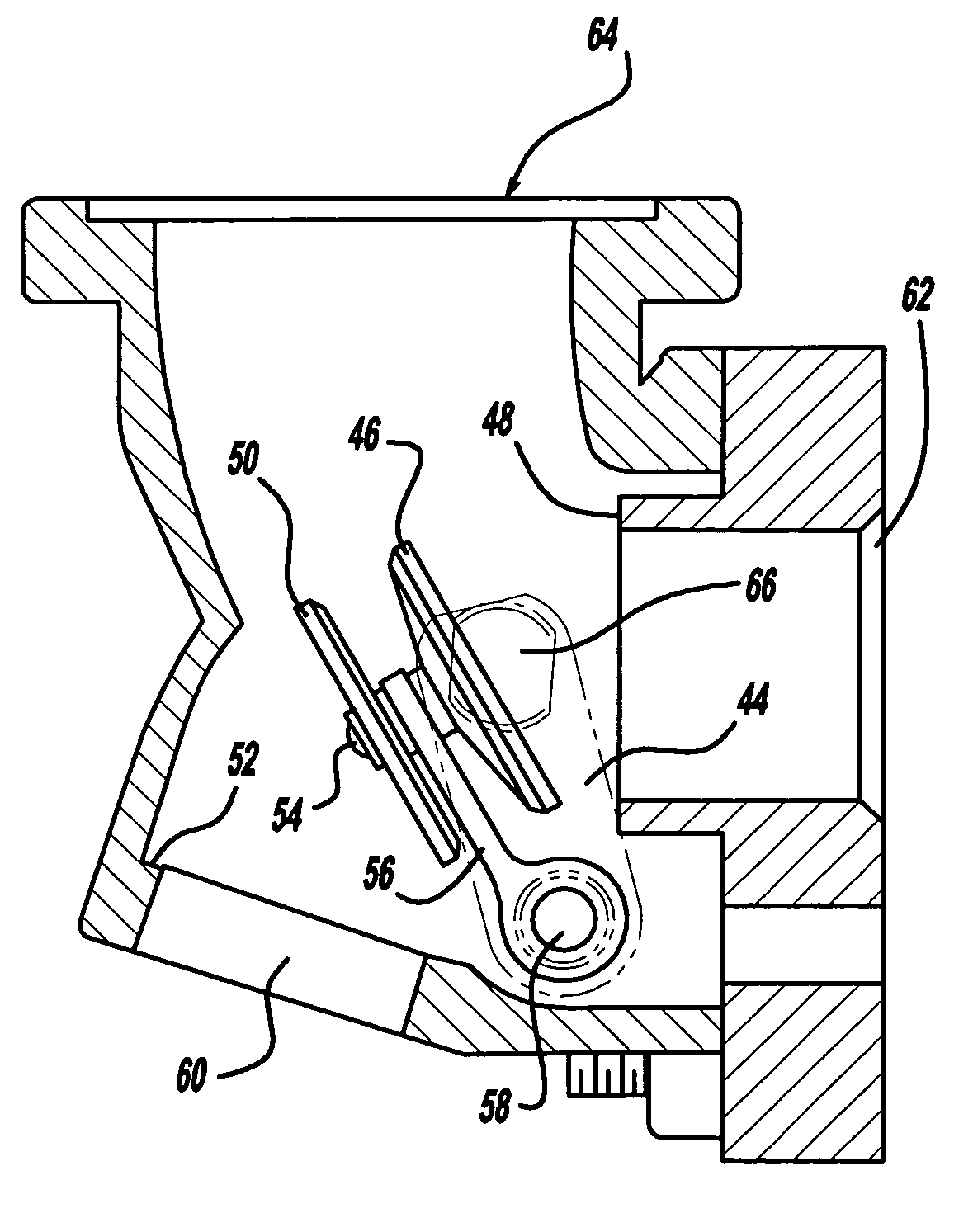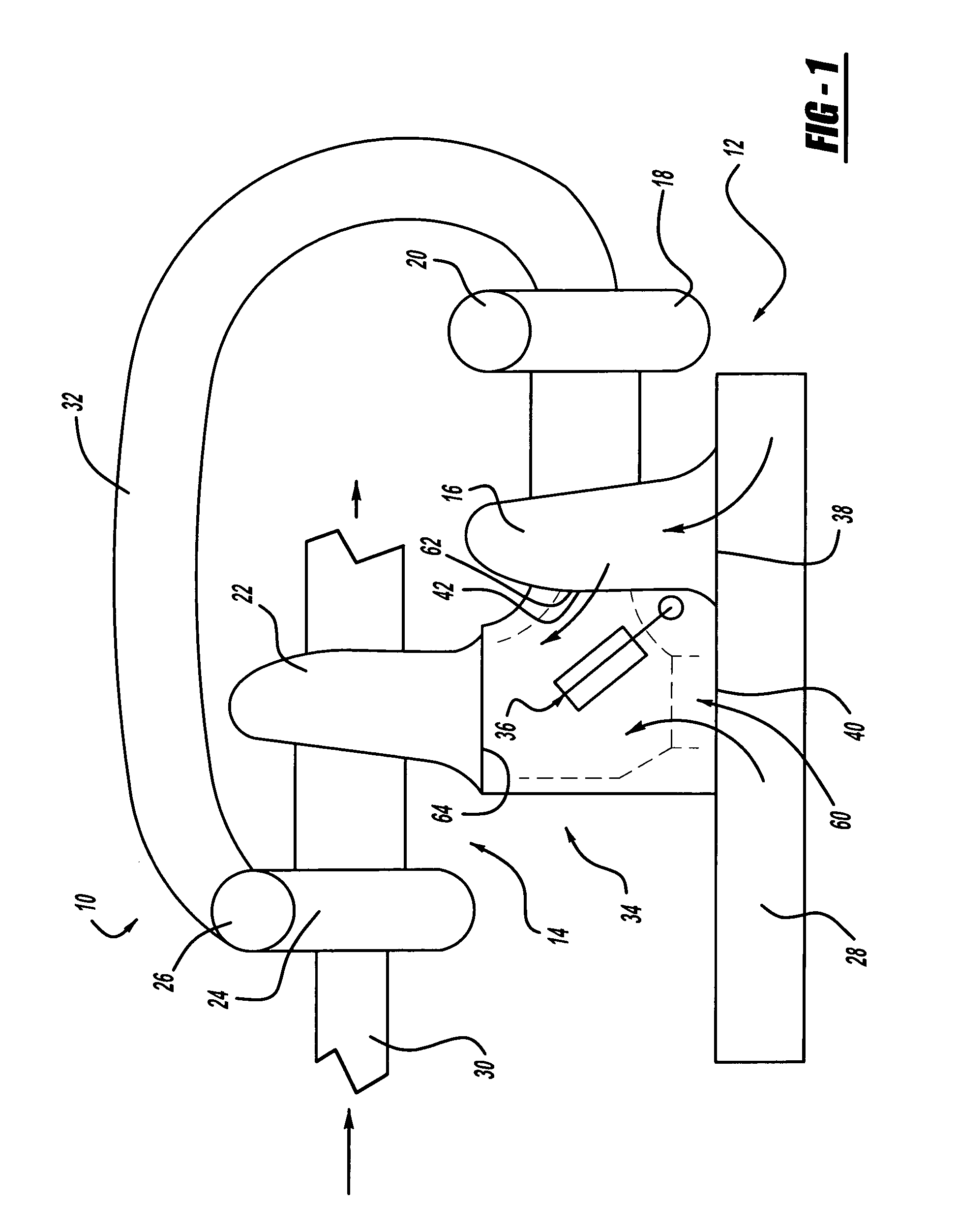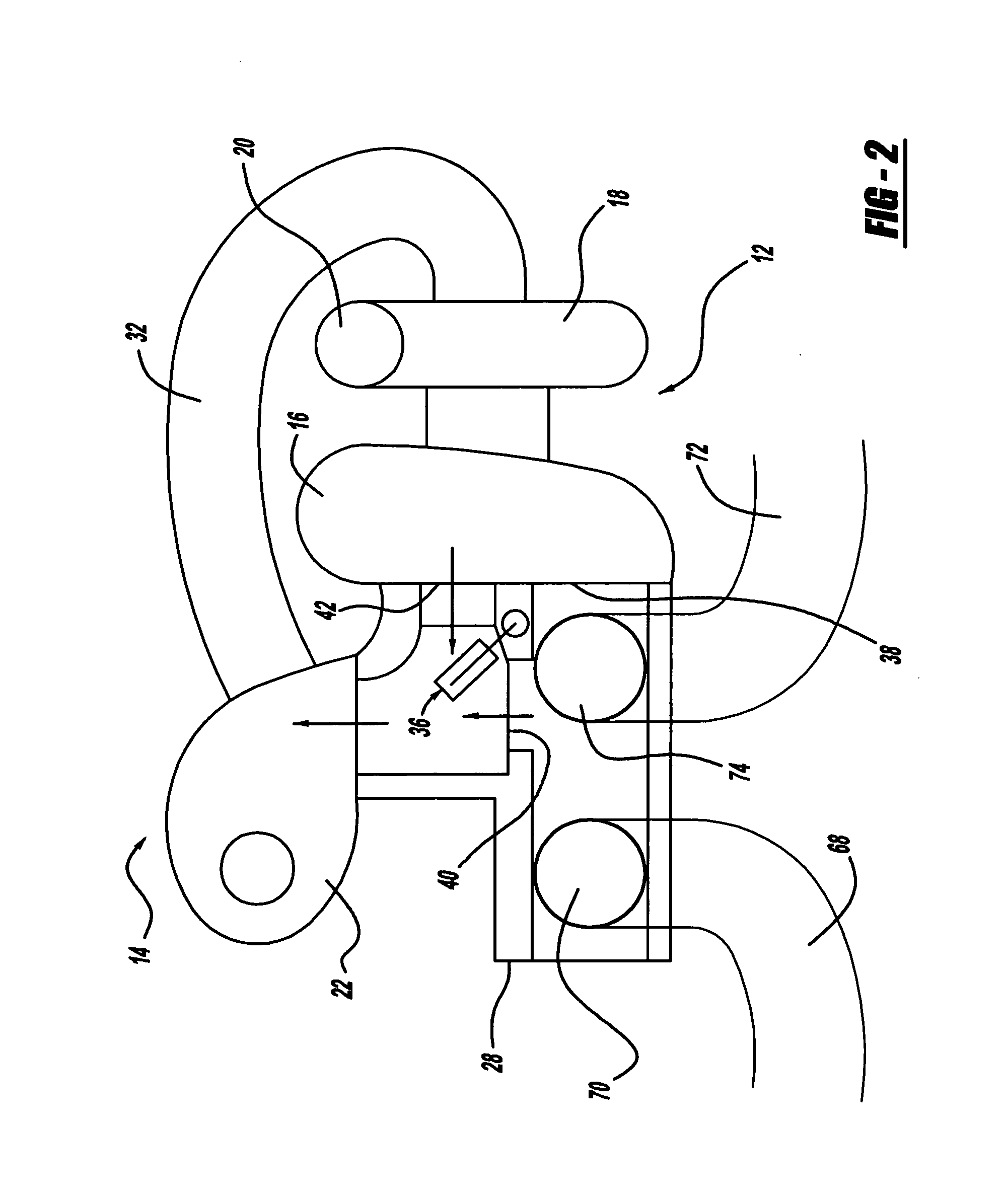Valve regulation assembly
a technology for valves and assemblies, applied in the direction of machines/engines, soldering devices, applications, etc., can solve the problems of turbo lag, hp turbine no longer providing enough boost pressure to have any effect on engine performance, and low amount of exhaust gas energy
- Summary
- Abstract
- Description
- Claims
- Application Information
AI Technical Summary
Problems solved by technology
Method used
Image
Examples
Embodiment Construction
[0031]The following description of the preferred embodiment(s) is merely exemplary in nature and is in no way intended to limit the invention, its application, or uses.
[0032]Referring to FIG. 1, a two-stage exhaust gas turbocharger unit is generally shown at 10, comprised of a high-pressure (HP) turbocharger unit 12, and a low-pressure (LP) turbocharger unit 14. The HP turbocharger unit 12 includes a HP turbine 16, and an HP compressor 18 having an outlet port 20. Similarly, the LP turbocharger unit 14 includes a LP turbine 22 and a LP compressor 24 having an outlet port 26. The LP turbine 22 is mounted on an exhaust manifold 28. The LP compressor 24 is connected to an intake line 30, which is connected at the center of LP compressor 24. An intake conduit 32 is connected to outlet port 26 on a first end, and is connected to the center of HP turbine 18 on a second end.
[0033]The HP turbine 16 and the LP turbine 22 are connected by a valve assembly 34 having a valve 36, shown in FIG. 1...
PUM
| Property | Measurement | Unit |
|---|---|---|
| circumference | aaaaa | aaaaa |
| pressure | aaaaa | aaaaa |
| speeds | aaaaa | aaaaa |
Abstract
Description
Claims
Application Information
 Login to View More
Login to View More - R&D
- Intellectual Property
- Life Sciences
- Materials
- Tech Scout
- Unparalleled Data Quality
- Higher Quality Content
- 60% Fewer Hallucinations
Browse by: Latest US Patents, China's latest patents, Technical Efficacy Thesaurus, Application Domain, Technology Topic, Popular Technical Reports.
© 2025 PatSnap. All rights reserved.Legal|Privacy policy|Modern Slavery Act Transparency Statement|Sitemap|About US| Contact US: help@patsnap.com



